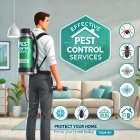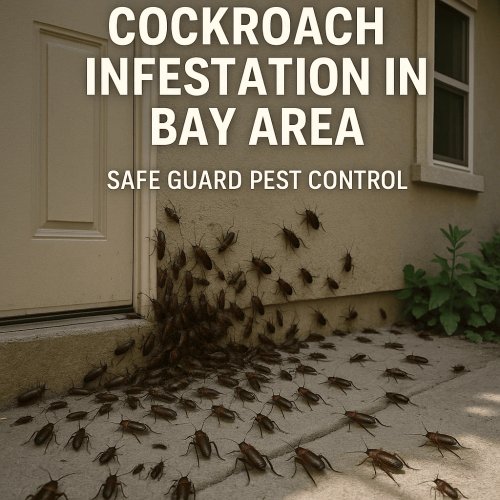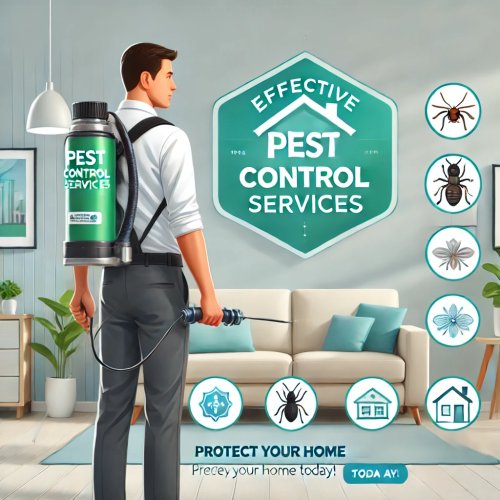Turkestan Cockroach Infestation in Bay Area
Turkestan cockroaches are spreading fast across California. Learn how Safe Guard Pest Control helps Bay Area homeowners manage this pest safely and effectively.

Welcome to Safe Guard Pest Control
The very proud owner of Safe Guard Pest Control in your area. It seems there is trouble brewing, and we will work to discuss these pests, dispel some myths and help you to manage them as simply, safely and efficiently as possible.
So what’s the news?
A species of roach known as the Turkestan cockroach and quickly spreading over all of California—I've found them here in the Bay Area. There are sightings of the roach all over the place, but it seems like people are seeing a lot more of it now, and actually in search of a rare thing, some new reports on the roach are coming out fast after being reported sparsely for years.
Almost seven years ago, the Vector Control of Alameda County had not a single report about them, but in the last 18 months, the stories about them poured in like rain.
These flies are found to be all over the Bay Area especially in drier and hotter parts of the region.
These are everywhere already replacing the oriental cockroach and have become the most common outdoor roach in this region.
What are their habits?
Some things make the different colonies easier formally to differentiate among themselves:
Outdoor dwellers: Their favorite haunt would be a nice, dark location with sun, i.e., wood piles, pavement cracks, water-meter boxes, irrigation lines, sewer covers, leaf litter, and gardens.
Active at night: They feed on rotted plant debris –from fallen fruits, leaves, and veggie scraps.
Occasional house guests, they wander indoors accidentally in search of water or during breeding; males, being able to fly, are more likely to stray in.
Non-dangerous: These roaches do not carry diseases or harm plants, animals, or people; nor are they like kitchen-invading German or American cockroaches. P.S. They are usually harmless and living out in the open, but their sheer numbers and size may occasionally bewilder urban homeowners.
Why are these creatures multiplying?
Some factors contribute to the profusion of colonized populations here in:
Milder winters and subsequently less freezing have helped more to survive from one year to another.
These are mostly due to the recent wet springs which have provided more moist environments for them to spread rapidly.
Fast life cycles are not in reckoning just for very own reason; they pragmatically move faster to cover a lot of ground, lay more eggs, and die off than the oriental roaches.
Spread among Trades: Roaches from exotic pet trade roach farms crawled right away to join this list-entry unfortunately. They most likely hitched off the shipments; unique colonies suddenly found their home in Alameda County, forcing more than a couple of houses in Fremont to move many miles away.
Safe guarding your home
Seeing one of these near your house or yard isn't a reason to panic. Here's something we do at Safe Guard, and by some coincidence, you can do that too.
Preventing entry
Locate and seal any likely holes for these roaches to crawl in from, no matter how tiny they may look.
Caulking cracks up around foundations, doors, windows, utility lines are an example.
Install door sweeps, and repair screens.
Look around your home at water meters, pipes in the basement foundation, sheds, grass, and patios as they would be breeding well around any given hole lol.
Money walk
Remove leaf litter, compost, and debris piles away from structures.
Store trash and pet foods in tightly sealed containers, especially outside.
Don't put heavy mulch too close to the foundation; gravel is much better.
Target a pest
Our treatment typically consists of:
Exterior barrier treatment through the application of proven insecticides specified as Temprid, Transport GHP, Demand CS, and Tandem, and pyrethroids. These insecticides had proven results in quick and effective killing of Turkestan cockroaches on proper use around the foundation and those problem zones.
Crack-and-crevice application around garages, patios, back decks, and other free zone entry points.
Sticky traps on the exterior allow us to survey adult populations, enabling delivery of informed treatment and therefore long-term control of the pest.
Don't argue, avoid sighting roaches—spraying storm drains and sewers actually achieves nothing; such practices of treatments pose local water poisoning.
We concentrate on perimeter and habitat zones.
Natural remedies
Simp-sham or squish roaming indoor robos—they are varmint-free.
Diatomaceous retard populations I'll cross over.
Certainly love zen that vegetative material that's lying around is certainly problems stopping cold for inside propagation.
Routine cleanup of vegetation debris and moisture sources helps keep populations low.
Should you worry?
Basically, no, they are not dangerous. However, anybody, especially if they have kids or pets, would want their lot to be safe and neat. Hundreds of calls received in the Central Valley and Bay Area for these pests have clearly indicated that they are staying, but actions these pests through your homes will further prevent an inconvenience.
Safe Guard Pest Control stands with you
We provide our customers with what they deserve, where every control entomologist is worried about maximum impact.
Thorough inspection of your property, focusing on roach-infested areas.
Apply preventive sealing and habitat clean up recommendation that is specific to your yard.
Apply professionally graded barrier treatments that are limited to human health.
Monitored long with follow-up visits to keep your home roach-free.
We work in all Bay Area communities along with Pleasanton, Livermore, and the greater Fremont area, and areas most affected by Turkestan roaches.
Hear it from the experts
“People need to stop being afraid... they're absolutely harmless.” – Lynn Kimsey, UC Davis entomologist
“Better think twice before you reach for that spray can of insecticide... What’s more dangerous: the most stupid-looking bug or the toxic spray you'll be putting into the atmosphere?”
“It's pretty simple, actually; people and creatures from outside are casually escorting rove colonies into your yard… you will never be free of them 100 %, because you cannot get everything; however, you could control nearly everything inside… by establishing an appropriate foundation barrier treatment.”
Your next steps
So you see roaches inside or outside your home? Call Safe Guard for a free inspection, and we will evaluate the situation and treatment mode.
Want to prevent them? We provide spring cleaning free packages: sealing, barrier treatment, habitat reduction, and trapping.
Some DIY tips are these:
Keep yard debris and mulch away from your walls.
Use outdoor sticky traps and dust diatomaceous earth along their most common points of entry.
Fix leaks and stop outside sprinklers from drenching the foundation.
Smack down indoor roaches. They'll not disperse diseases, so you can kill them by any means.
Final thoughts
They already have been an overt and defining part of the local outdoors, may not pose any health threat. Attention to detail with anticipation allows a discussion about possible maintenance for an ultimate outcome to keep your home clean, clear, and free from roaches. At Safe Guard Pest Control, we are fully prepared to support you as we stand by you—professionally trained and local.














